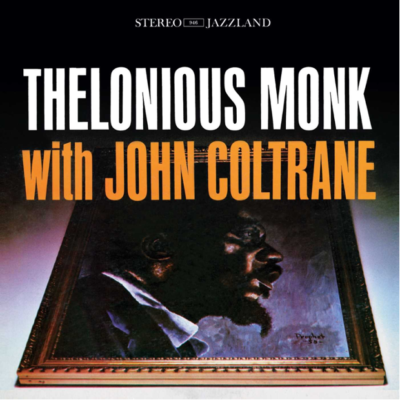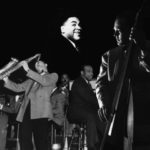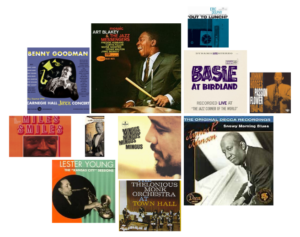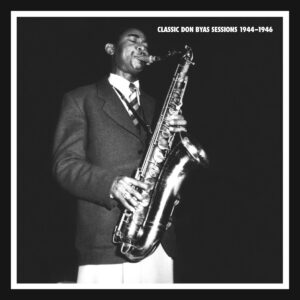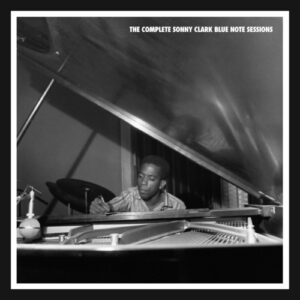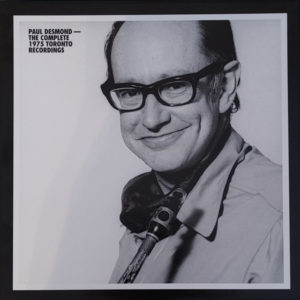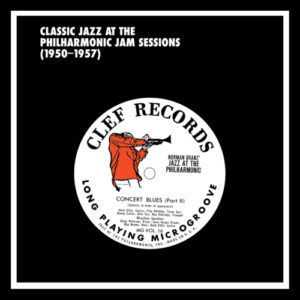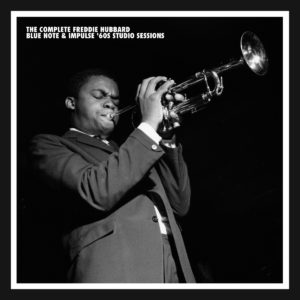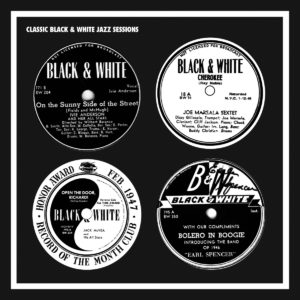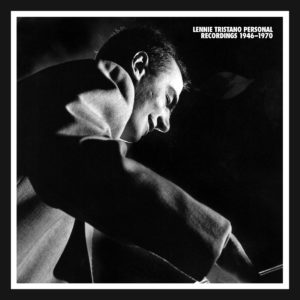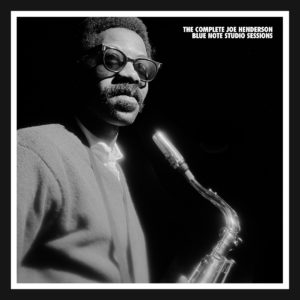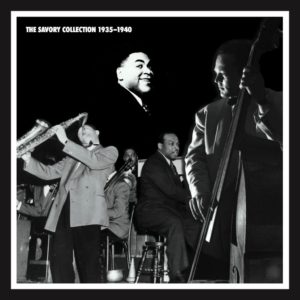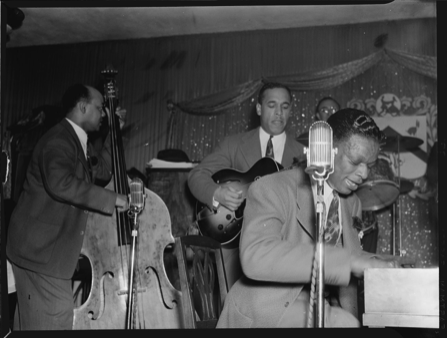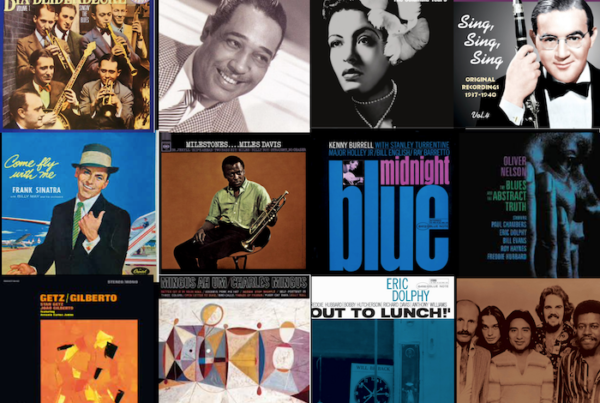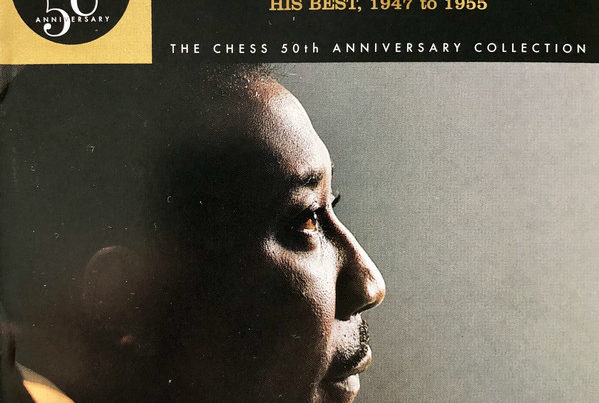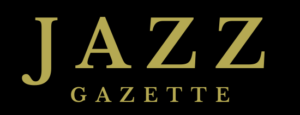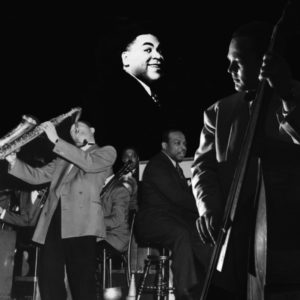“In John Coltrane, Monk found an analytical brother — a musician who shared in his intellectual approach and remained true to the sound and structure of his music. Thelonious Monk’s music had been played already before Trane with different saxophonists, but I think Trane was more precise, He was more careful about learning things exactly like Monk meant…” – Tommy Flanagan
In Jazz History 1957 belongs to
Thelonious Monk and John Coltrane.
The year 1957 brought two of the music’s Olympian figures together in collaboration, a year that, for distinct reasons, was pivotal in each man’s life.
Monk’s challenges can be seen as work-related. His Riverside Records contract, plus reissues of older work by Blue Note and Prestige in the new “long playing” format, brought renewed attention to his music, and his third Riverside collection, Brilliant Corners, was hailed as his magnum opus upon its release.
Yet two obstacles stood in the way of even greater acclaim for his music. His irregularly-employed working band had dissolved late in 1956 when alto saxophonist Ernie Henry joined Dizzy Gillespie; and the absence of a necessary cabaret card, which had been revoked after a questionable drug conviction in 1951, meant that Monk could not be employed in Manhattan night clubs. A scarcity of work under his own name led Monk uncharacteristically to record as a sideman with Sonny Rollins and as a guest with Art Blakey’s Jazz Messengers.
John Coltrane’s issues had more to do with health. After a decade of unnoticed employment with Dizzy Gillespie, Johnny Hodges and Earl Bostic, the saxophonist had finally attracted attention as the aggressive, complex contrast to Miles Davis in the trumpeter’s first immortal quintet. Coltrane saw this as a spur to rid himself of a longstanding heroin habit, but his attempt to go cold turkey while continuing to work, and the alcohol dependence that followed as he drank to ease the pain of withdrawal, left him in such disheveled shape that Davis fired him.
In early 1957 Coltrane began visiting the Monk household.
“We’d already recorded one song, ‘Monk’s Mood,’ and I liked it so well,” So he invited me around, then I started learning all of his tunes . . . I’d go by his apartment, and get him out of bed [laughs] — he’d wake up and roll over to the piano and start playing . . . he would stop and show me some parts that were pretty difficult, and if I had a lot of trouble, well, he’d get his portfolio out show me the music . . . sometimes, we’d get just one tune a day. Maybe.” – John Coltrane
Coltrane had already recorded his most dramatic and influential early solo on Davis’s version of “Round Midnight,” and his fascination with Monk’s music only grew as he struggled to put his life in order.
“Working with Monk brought me close to a musical architect of the highest order I felt I learned from him in every way – through the senses, theoretically, technically. I would talk to Monk about musical problems, and he would sit at the piano and show me the answers just by playing them. I could watch him play and find out the things that I wanted to know. Also, I could see a lot of things that I didn’t know about at all.” – John Coltrane, Down Beat 1960
By April, Coltrane had earned enough of the pianist’s confidence for Thelonious Monk to include him (along with bassist Wilbur Ware) as surprising curtain-call participants on the album Thelonious Himself. The saxophonist’s entrance halfway through “Monk’s Mood,” after 40 minutes of otherwise unaccompanied piano, is one of the great dramatic moments of the LP era.
Two months later, Monk gave Coltrane the rare opportunity to blow alongside tenor saxophone patriarch Coleman Hawkins on Monk’s subsequent Riverside album, Monk’s Music.
At the Five Spot
Between the two albums, Monk finally won back his cabaret card on the condition that he find work in one of the city’s clubs. The club willing to hire and in effect vouch for Monk was the Five Spot, a bar in Cooper Square that had become a popular hangout for poets and painters after initiating a music policy featuring bands led by Cecil Taylor and David Amram.
Needing his own ensemble for the gig, Monk recruited Coltrane, Ware and, when first-choice drummer Frankie Dunlop proved unavailable due to lack of a union card, Shadow Wilson. The quartet began its extended Five Spot stay in July, and within weeks was being hailed as the greatest meeting of jazz minds since Charlie Parker and Dizzy Gillespie.
Riverside was eager to record the new Monk quartet, but Coltrane’s recently signed exclusive recording contract with Prestige stood in the way. Normally the situation would have been resolved through a reciprocal swap of artists; but Prestige would only grant Coltrane permission if Monk agreed to return to Prestige for a future session, and Monk adamantly refused further dealings with a label that had treated him poorly.
So no recordings appeared during the lifetime of the group, and the legend of its brilliance only grew.
The First Discovery
For the next three years, the possibility of uncovering recorded evidence of the Monk quartet with Coltrane appeared as unlikely as finding the previous Loch Ness Monster of documented jazz, the Buddy Bolden cylinder.
Riverside had surreptitiously taped three tracks by the group in July 1957, and released them on its Jazzland subsidiary in 1961 as Thelonious Monk with John Coltrane. All three titles revisited Monk originals that had received their initial recordings in a trio context.
“Ruby, My Dear,” the Monk composition that had gained currency among other musicians at the time, was a quartet feature for Coleman Hawkins a month earlier on the Monk’s Music album, and provides a fascinating basis for comparing two tenor saxophone immortals. “Nutty” and “Trinkle Tinkle” had not been covered by anyone to that point, with the latter a rare instance (“Four in One” being another) of a Monk creation seemingly designed to answer those who questioned his keyboard technique.
The quartet performed brilliantly, exceeding all expectations, but the total playing time yielded only 20 minutes of music. To complete the album, producer Orrin Keepnews added three earlier alternate takes, two from Monk’s Music (with only “Epistrophy” featuring a Coltrane solo) and a lengthy solo blues, “Functional,” from the Thelonious Himself sessions.
Thirty-five years would pass before a more substantial document of the 1957 Monk quartet emerged.
Thelonious Monk Quartet with John Coltrane at Carnegie Hall
(Mosaic Records LP and BlueNote CD)
During 2005, while preserving recordings made decades earlier for the Voice of America, the Library of Congress uncovered a Carnegie Hall concert held for the benefit of the Morningside Community Center on November 29, 1957.
Billed as Thanksgiving Jazz and presented in both 8:30 PM and midnight sets, the event was advertised as featuring “Miss Billie Holiday, Dizzy Gillespie and his Orchestra with [vocalist] Austin Cromer, Special Attraction Ray Charles, Chet Baker with Zoot Sims Quartet, Thelonious Monk Quartet with John Coltrane, and Introducing in Concert the Brilliant Sonny Rollins.”
The two sets by Monk’s quartet, each containing roughly 25 minutes of music, presented a far more complete view of the group’s repertoire. Both sets appeared in 2006 as Thelonious Monk Quartet with John Coltrane at Carnegie Hall.
The band, with Ahmed Abdul-Malik in the bass chair that Wilbur Ware had abandoned three months earlier, sounded even more intense and brilliant than it had on the Jazzland tracks. Coltrane was in greater command of the rapidly articulated arpeggios that critic Ira Gitler would soon describe as “sheets of sound,” and Monk responded with startling inventions of his own.
Several tracks feature choruses before the final theme statement that summarize the extraordinary level of inspiration. Coltrane returns while Monk, seemingly reluctant to cede the spotlight, delivers more than his usual oblique support, and the resulting counterpoint takes the music to an even higher level.
The two shows featured both music that Coltrane had not documented previously with Monk and recollections of their earlier studio sessions. The former category includes three Monk compositions, “Evidence,” “Bye-Ya” and “Blue Monk,” plus the standard “Sweet and Lovely,” where a double-time section indicates that Monk had adjusted his usual approach to highlight Coltrane’s strengths.
Among the more familiar titles were “Monk’s Mood,” with extended space for Coltrane; “Crepescule with Nellie,” the recent original that had proved extremely challenging during the Monk’s Music sessions; a reprise of “Nutty;” and two versions of “Epistrophy” that found Coltrane in his most exploratory frame of mind.
Final Recordings
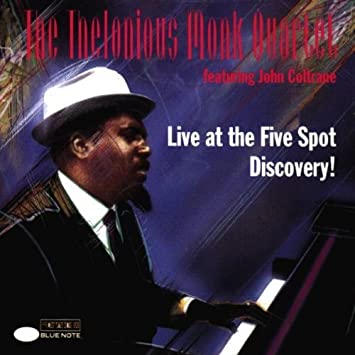
Monk disbanded the Quartet and Coltrane’s first recording session after joining Miles Davis in February 1958 for the Columbia album Milestones, would display what he had learned in another legendary solo, on the Monk blues “Straight, No Chaser”.
For his part, Monk finally got around to recording at the Five Spot in August with his subsequent quartet featuring Johnny Griffin, Abdul-Malik and Roy Haynes. The group’s versions of “Nutty,” “Evidence” and other Monk staples on the Riverside albums Thelonious in Action and Misterioso gave further impetus to Monk’s status as one of jazz’s greatest composers.
Coltrane subbed for Griffin one evening, an occasion that decades later produced the Blue Note album Discovery! It would be the final convening of the legendary partnership.
Larry Greenbaum
The Archeologist
Library of Congress
We’ve heard Monk play this many times…But to hear what happens when Coltrane is involved with this piece and they double-up, it’s just wonderful! – Bruce Lundvall
In 1996, Coltrane scholar Lewis Porter came across the original news items that stated this concert was to be taped by the Voice of America. He contacted the Library of Congress several times since then, but the VOA Collection there was still being processed and the database was not yet complete.
The Library has been systematically processing, cataloging, and preserving the Voice of America Collection for many years. In February of 2005, while thumbing through some VOA acetate tapes awaiting digitization, I noticed several reels labeled “Carnegie Hall Jazz 1957.”
One of the tape boxes had a handwritten note on the back that said “T. Monk” with song titles. When we played it, I recognized both Thelonious Monk and John Coltrane and my heart started racing. I confirmed with Lewis that these tapes had never surfaced or been released in any form. They were indeed the tapes he’d been searching for all these years.
We’ve discovered many rare recordings here over the years, but this one is special. It reminds us once again why it’s so important to preserve these unique materials. It’s why we do what we do, and why we love this work. – Larry Appelbaum – Recording Lab Supervisor, Library of Congress

